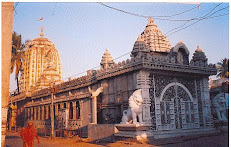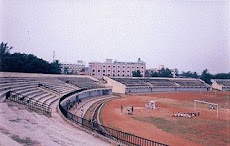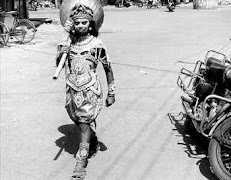Indian Express/Debabrata Mohanty
In a novel bid to popularise the central schemes like the NREGS and save folk arts from dying out, the state government on Thursday signed an MoU with 22 cultural bodies of Ganjam district. These popular folk art forms of Ganjam are now in a moribund state due to changing preferences of people and a lack of patronage. At present, there are 5,000 artistes who practise these folk arts and make a living out of it.
The MoU, a brainchild of Ganjam collector V K Pandian, aims to give a new lease of life to folk art forms like Pala, Daskathia, Prahallada Nataka, Radha Krushna Leela, Ghudki, Ram Leela and Bagha Nacha by making the artistes a part of central schemes like NREGS, National Rural Health Mission and Sarva Shikha Abhiyan. The organisations based in 22 blocks of the district signed the MoU with the district executive heads of each of the schemes that would fund their performances at villages and help them buy new musical instruments.
The MoU is based on the premise that these central schemes have IEC (information, education and communication) component and the money allocated for IEC is used to spread awareness about such schemes in rural areas through folk art forms. “It is a double whammy. Since these missions are meant for the rural poor, these folk arts are the best medium to popularise the benefits of the government schemes. For a labourer working in NREGS, messages told through folk arts like Pala and Daskathia are easily understood than through TV and radio. In the process, the art forms that are dying out due to a lack of patronage also get a fillip,” said Pandian.
In a novel bid to popularise the central schemes like the NREGS and save folk arts from dying out, the state government on Thursday signed an MoU with 22 cultural bodies of Ganjam district.
These popular folk art forms of Ganjam are now in a moribund state due to changing preferences of people and a lack of patronage. At present, there are 5,000 artistes who practise these folk arts and make a living out of it.
The MoU, a brainchild of Ganjam collector V K Pandian, aims to give a new lease of life to folk art forms like Pala, Daskathia, Prahallada Nataka, Radha Krushna Leela, Ghudki, Ram Leela and Bagha Nacha by making the artistes a part of central schemes like NREGS, National Rural Health Mission and Sarva Shikha Abhiyan. The organisations based in 22 blocks of the district signed the MoU with the district executive heads of each of the schemes that would fund their performances at villages and help them buy new musical instruments.
The MoU is based on the premise that these central schemes have IEC (information, education and communication) component and the money allocated for IEC is used to spread awareness about such schemes in rural areas through folk art forms. “It is a double whammy. Since these missions are meant for the rural poor, these folk arts are the best medium to popularise the benefits of the government schemes. For a labourer working in NREGS, messages told through folk arts like Pala and Daskathia are easily understood than through TV and radio. In the process, the art forms that are dying out due to a lack of patronage also get a fillip,” said Pandian.
The MoU, which was inked after suggestions from Chief Minister Naveen Patnaik, would see an annual expenditure of Rs 3 crore to these folk artistes for dissemination of information about the government schemes.
ADM Sashi Bhushan Padhi said each of the cultural troupes in 22 blocks would perform at least 300 days a year, making it 6,600 performances. Each of the troupes has been given the seed money of Rs 1 lakh, of which Rs 20,000 was spent for buying new musical instruments.
The MoU has infused a new lease of life in the folk artistes. “The MoU is a second life for us,” said Santosh Kumar Padhi, a lead singer in Bharat Leela.

























.jpg)

















































